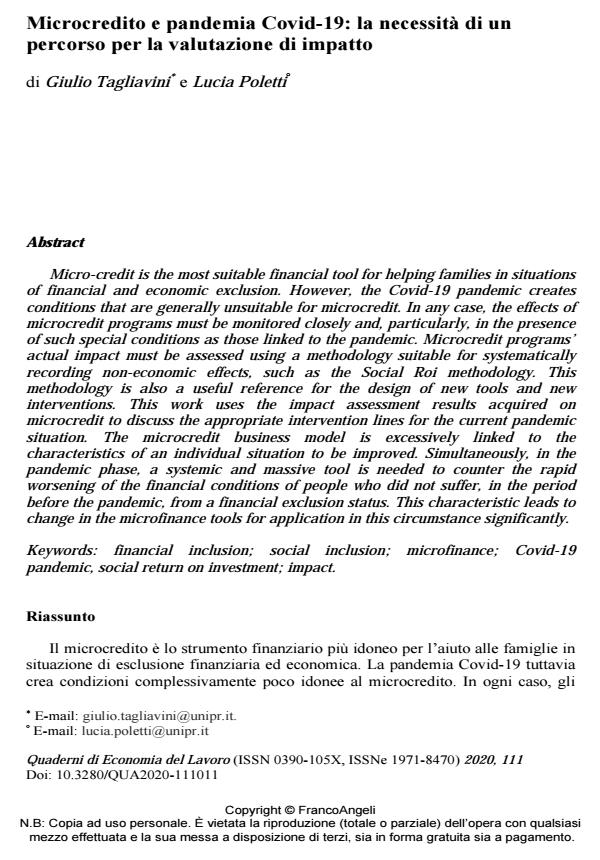Microcredito e pandemia Covid-19: la necessità di un percorso per la valutazione di impatto
Journal title QUADERNI DI ECONOMIA DEL LAVORO
Author/s Giulio Tagliavini, Lucia Poletti
Publishing Year 2021 Issue 2020/111
Language Italian Pages 26 P. 237-262 File size 250 KB
DOI 10.3280/QUA2020-111011
DOI is like a bar code for intellectual property: to have more infomation
click here
Below, you can see the article first page
If you want to buy this article in PDF format, you can do it, following the instructions to buy download credits

FrancoAngeli is member of Publishers International Linking Association, Inc (PILA), a not-for-profit association which run the CrossRef service enabling links to and from online scholarly content.
Micro-credit is the most suitable financial tool for helping families in situations of financial and economic exclusion. However, the Covid-19 pandemic creates conditions that are generally unsuitable for microcredit. In any case, the effects of microcredit programs must be monitored closely and, particularly, in the presence of such special conditions as those linked to the pandemic. Microcredit programs’ actual impact must be assessed using a methodology suitable for systematically recording non-economic effects, such as the Social Roi methodology. This methodology is also a useful reference for the design of new tools and new interventions. This work uses the impact assessment results acquired on microcredit to discuss the appropriate intervention lines for the current pandemic situation. The microcredit business model is excessively linked to the characteristics of an individual situation to be improved. Simultaneously, in the pandemic phase, a systemic and massive tool is needed to counter the rapid worsening of the financial conditions of people who did not suffer, in the period before the pandemic, from a financial exclusion status. This characteristic leads to change in the microfinance tools for application in this circumstance significantly.
Keywords: Financial inclusion; social inclusion; microfinance; Covid-19 pandemic, social return on investment; impact.
Giulio Tagliavini, Lucia Poletti, Microcredito e pandemia Covid-19: la necessità di un percorso per la valutazione di impatto in "QUADERNI DI ECONOMIA DEL LAVORO" 111/2020, pp 237-262, DOI: 10.3280/QUA2020-111011